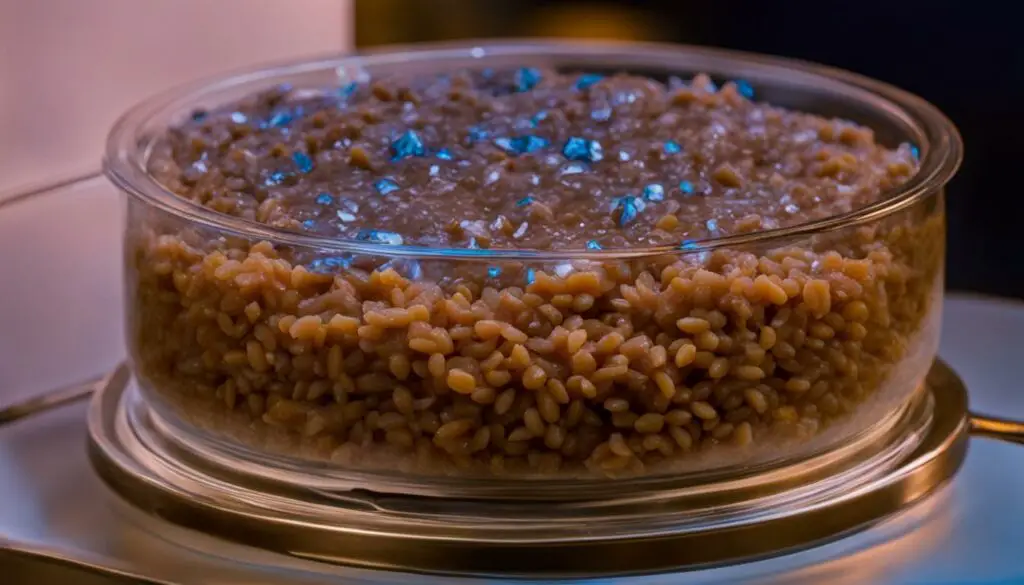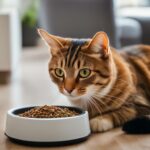As a cat owner, I understand the importance of providing my furry friend with the best care possible. This includes not only choosing the right wet cat food but also ensuring its freshness and safety. Many pet parents wonder how long wet cat food can stay in the fridge before it spoils. Let’s take a closer look at this subject to ensure we’re keeping our cats happy and healthy.
Key Takeaways:
- Wet cat food should not be left sitting out for more than one to two hours to prevent bacterial growth.
- Storing wet cat food in the fridge between 32°F and 40°F (0°C and 4°C) inhibits bacteria and maintains freshness.
- Check expiration dates and use opened wet cat food within three to five days for optimal freshness.
- Watch out for signs of spoilage, such as an unpleasant odor or abnormal appearance, and discard if necessary.
- Consult with a veterinarian for specific recommendations on wet cat food storage and handling.
The Importance of Freshness in Wet Cat Food
Freshness plays a vital role in providing optimal nutrition and enjoyment for our feline companions. When it comes to wet cat food, ensuring freshness is crucial for maintaining its quality and safety. Fresh food not only offers higher nutritional value but also appeals to a cat’s senses, making mealtime more enjoyable. As a responsible pet parent, it’s important to understand the significance of freshness and take steps to prioritize it in your cat’s diet.
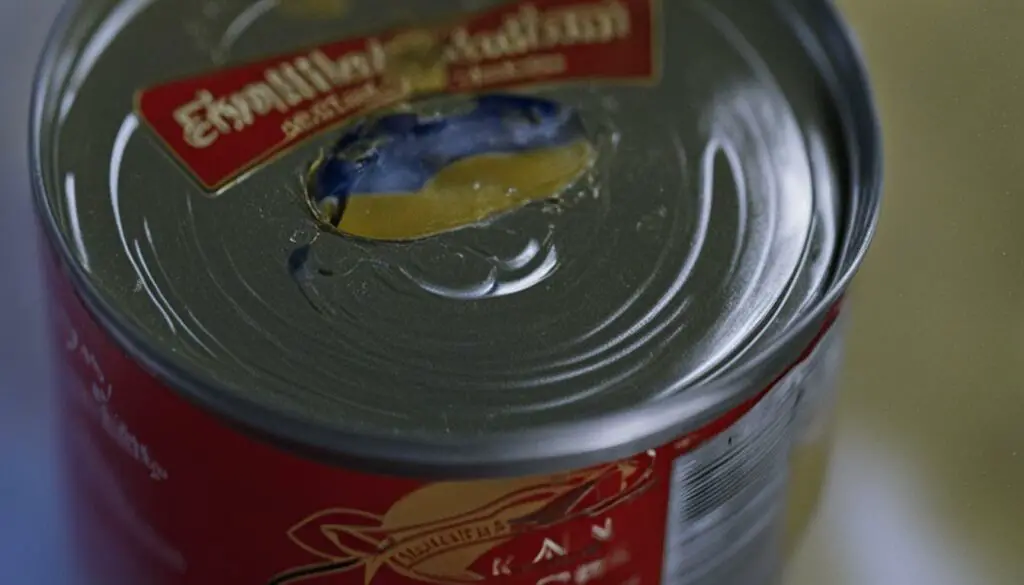
Why Freshness Matters
Feeding your cat fresh wet food is essential for their overall well-being. Fresher food contains higher levels of essential nutrients, which are important for their growth and development. Stale or expired food may not provide the same level of nutrition, and cats may be less inclined to eat it. Additionally, fresh wet cat food is less likely to be contaminated with harmful bacteria, reducing the risk of digestive issues and foodborne illnesses.
“Cats are known for their discerning palates, and fresh food tends to be more appetizing to them.”
Ensuring Freshness
As a cat owner, there are several steps you can take to maintain the freshness of your cat’s wet food. Firstly, establish a feeding routine and serve the appropriate portion size to minimize waste. Uneaten food should be promptly put away in an airtight container and stored in the refrigerator. It’s important to follow the “first in, first out” method, using older cans or pouches before opening new ones. Regularly check the expiration dates on the packaging to ensure you’re serving your cat fresh food.
If your cat is not eating its meals, consider trying different flavors or textures to entice their appetite. Consulting with a vet can also help address any underlying health issues.”
By prioritizing freshness in your cat’s wet food, you’re not only providing them with the best possible nutrition but also ensuring their safety and satisfaction. Cats thrive on quality, fresh food, and as pet parents, it’s our responsibility to meet their dietary needs and make mealtime an enjoyable experience.
Section 3: Storing Wet Cat Food: Best Practices
Properly storing wet cat food is essential for maintaining its freshness and ensuring your cat’s safety. Follow these best practices to keep your cat’s food in optimal condition:
- Temperature: Store wet cat food in a refrigerator at a temperature between 32°F and 40°F (0°C and 4°C). This temperature range inhibits bacterial growth and helps preserve the food’s quality.
- Airtight Containers: After opening a can or pouch of wet cat food, transfer any unused portion to an airtight container. This prevents contamination and the absorption of unwanted odors from other foods in the refrigerator.
- First In, First Out: Practice the “first in, first out” method when storing wet cat food. This means using the oldest cans or pouches first to ensure freshness and avoid any potential spoilage.
- Check Expiration Dates: Before feeding your cat wet food, always check the expiration date. Using expired food can be harmful to your cat’s health. Discard any cans or pouches past their expiration date.
By following these best practices, you can ensure that your cat’s wet food remains fresh, safe, and enjoyable for every meal.
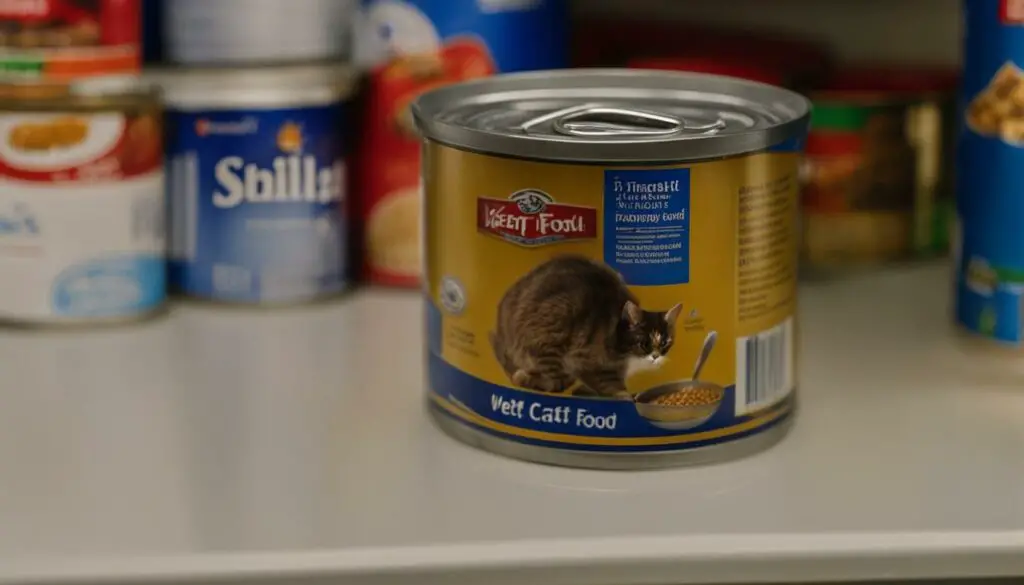
Comparison of Shelf Life
| Wet Cat Food Type | Shelf Life |
|---|---|
| Canned Wet Cat Food | Up to 2-5 years unopened, 2-3 days after opening |
| Wet Cat Food Pouches or Trays | 3-5 days after opening |
“Properly storing wet cat food is crucial for maintaining its freshness and nutritional value. Following these best practices can help prevent spoilage and ensure your cat enjoys every meal.” – Dr. Amanda Johnson, Veterinarian
Shelf Life of Wet Cat Food
When it comes to wet cat food, understanding its shelf life is essential to ensure the freshness and quality of the food you serve to your feline companion. The shelf life of wet cat food can vary depending on various factors, including the type of packaging and storage conditions. Let’s take a closer look at how long wet cat food can last before it should be consumed or discarded.
Generally, wet cat food that comes in cans has a longer shelf life compared to food packaged in pouches or trays. This is because canned wet cat food is sealed to prevent air and moisture from entering, preserving the food for a longer period. Unopened cans of wet cat food can typically be stored in a cool, dry place for 2-5 years, depending on the brand and manufacturer’s guidelines.
Once a can of wet cat food is opened, it should be used within 2-3 days to maintain its freshness and minimize the risk of bacterial growth. It is important to store any unused portions in a sealed container in the refrigerator to slow down spoilage and keep the food safe for your cat to consume. Remember to always check the expiration date before using opened or unopened wet cat food to ensure its quality and safety.
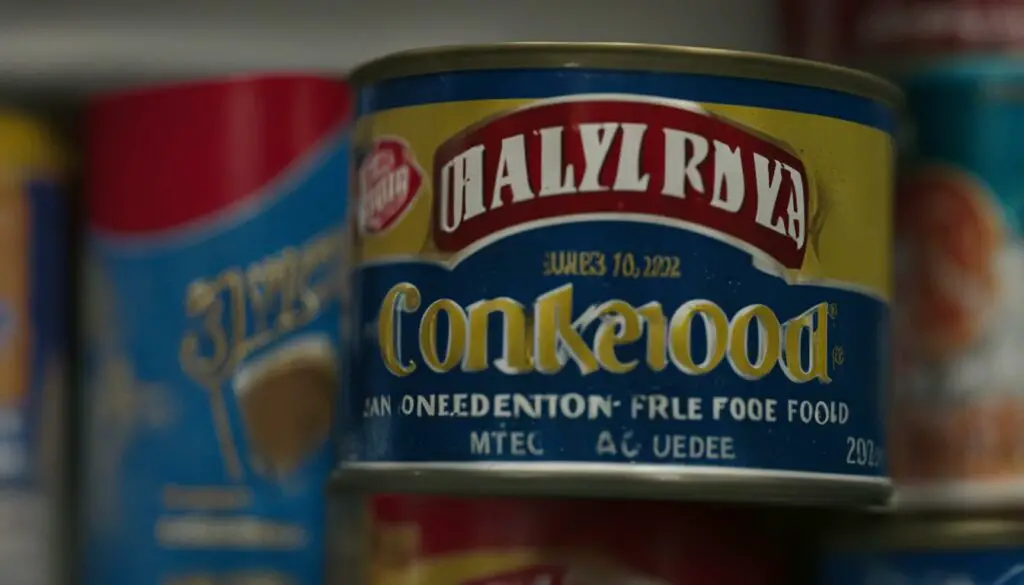
Shelf Life of Wet Cat Food: Comparison Table
| Type of Packaging | Unopened Shelf Life | Opened Shelf Life |
|---|---|---|
| Canned Wet Cat Food | 2-5 years | 2-3 days |
| Pouches or Trays | 6 months – 2 years | 1-2 days |
It is important to note that these guidelines are general recommendations, and it’s always advisable to check the specific instructions provided by the manufacturer. Additionally, if you notice any signs of spoilage, such as an unusual odor, color, or texture, it’s best to discard the wet cat food to prevent any potential health risks for your cat.
Signs of Spoilage in Wet Cat Food
When it comes to wet cat food, it’s important to be vigilant and on the lookout for signs of spoilage. Detecting these signs early can help prevent digestive issues and keep your feline friend safe and healthy. Here are some key indicators that your cat’s wet food may have spoiled:
- Unpleasant odor: If the wet cat food smells off, rancid, or has a strong, unpleasant odor, it’s a clear sign that it has gone bad. Trust your nose and discard the food immediately.
- Abnormal texture or appearance: Wet cat food should have a smooth and consistent texture. If you notice any clumps, mold, or separation of liquids in the food, it’s best to err on the side of caution and avoid feeding it to your cat.
- Presence of pests: Keep an eye out for any insects or pests in or around the wet cat food container. Infestation can occur if the food has been exposed or stored improperly, indicating spoilage.
Remember, your cat’s health and well-being should always be a top priority. If you come across any of these signs of spoilage, it’s best to discard the food and provide your cat with fresh, safe options instead.
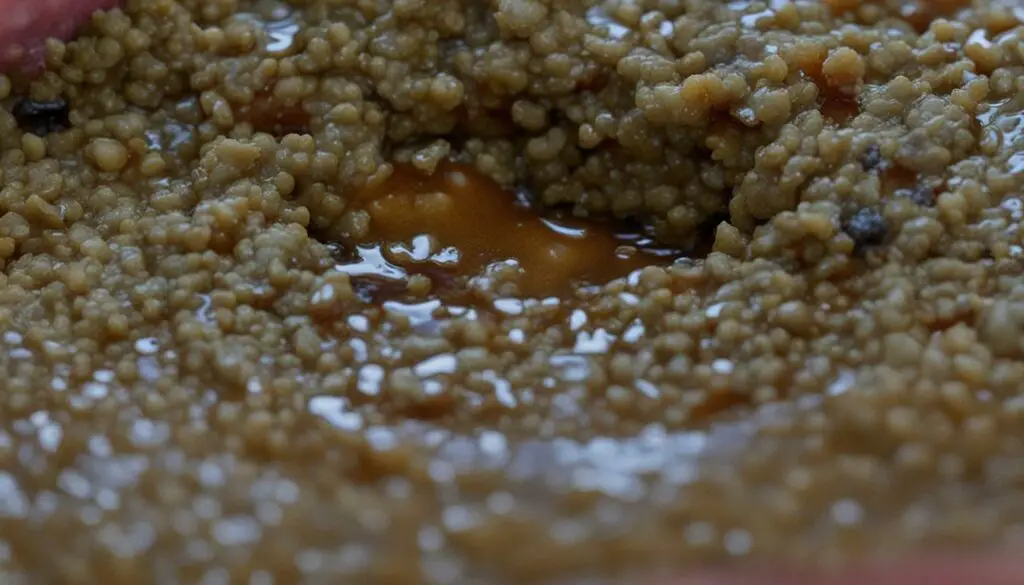
Table: Comparing Signs of Spoilage in Wet Cat Food
| Signs of Spoilage | What it Indicates |
|---|---|
| Unpleasant odor | Potential bacterial growth or decay |
| Abnormal texture or appearance | Possible contamination or deterioration |
| Presence of pests | Indication of improper storage or exposure |
Verifying Shelf Life Information
When it comes to storing wet cat food, it’s important to follow the recommended guidelines provided by reputable cat food manufacturers and veterinary resources. While this article provides general information on the shelf life of wet cat food, it is essential to verify and cross-reference this information to ensure the health and safety of your furry friend.
Each brand may have different guidelines for storage and shelf life, so it’s crucial to consult the specific instructions provided on the packaging. Manufacturers often conduct extensive research and testing to determine the optimal shelf life of their products, taking into account factors such as ingredients, packaging, and storage conditions.
By verifying the shelf life information, you can ensure that you are following the most accurate and up-to-date recommendations. This will help you make informed decisions about storing and using wet cat food, minimizing the risk of spoilage and potential health issues for your cat.
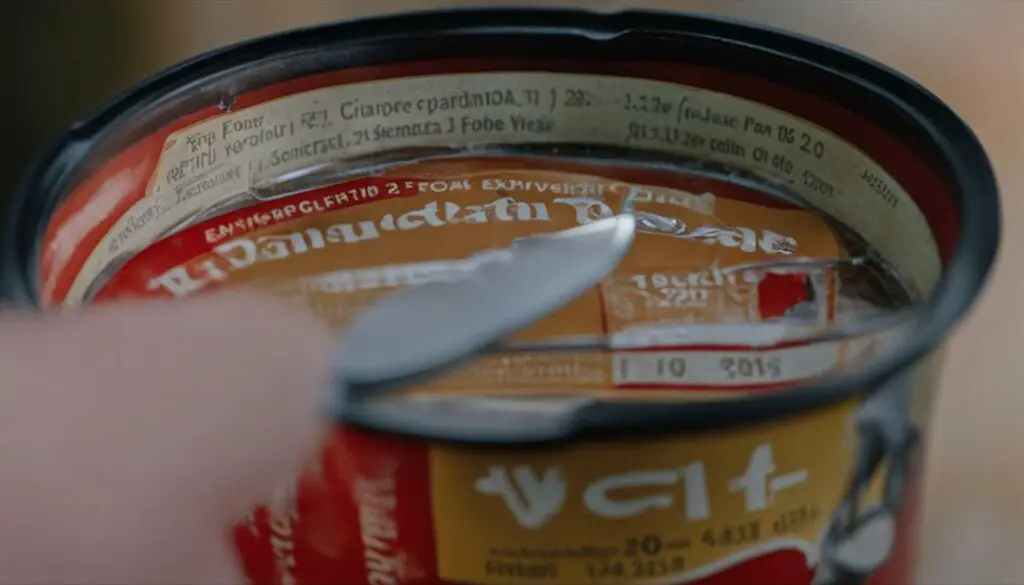
Additional Tips for Verifying Shelf Life Information
- Check the manufacturer’s website or contact their customer service for detailed information on shelf life and storage recommendations.
- Consult reputable veterinary resources for guidelines on storing and handling wet cat food.
- Consider the individual needs and preferences of your cat, as some may have specific dietary requirements or sensitivities.
Storing Wet Cat Food in Refrigeration
When it comes to storing wet cat food, refrigeration is key. Keeping the food at the right temperature helps to slow down bacterial growth and maintain its freshness for a longer period of time. To ensure your cat’s food stays in optimal condition, here are some best practices for storing wet cat food in refrigeration.
Proper Temperature
The first step is to make sure your refrigerator is set to the proper temperature range for storing wet cat food. The ideal temperature is between 32°F and 40°F (0°C and 4°C). This temperature range inhibits the growth of bacteria, keeping the food safe for your furry friend to consume.
Immediate Refrigeration
After opening a can or pouch of wet cat food, it’s important to refrigerate any unused portions immediately. This helps to preserve the food’s freshness and prevent spoilage. Cover the food securely to prevent any odors from infiltrating the refrigerator and affecting the taste of the food.
Sealed Containers
When storing wet cat food in the refrigerator, it’s recommended to transfer any unused portions to a sealed container. This helps to maintain the food’s quality and prevent contamination. Airtight containers specifically designed for pet food are available and can help extend the shelf life of the food.
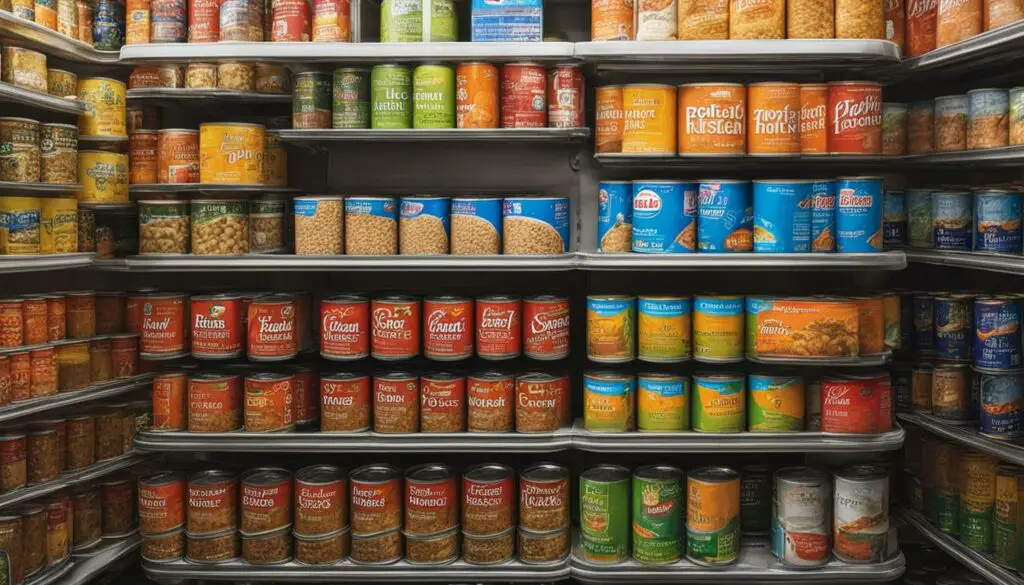
| Food Storage Tip | Explanation |
|---|---|
| Follow the temperature guidelines | Maintain a refrigerator temperature between 32°F and 40°F (0°C and 4°C) for optimal storage conditions. |
| Refrigerate immediately after opening | Store any unused portions in the refrigerator as soon as possible to maintain freshness. |
| Transfer to a sealed container | Using an airtight container helps to prevent contamination and extends the shelf life of the food. |
By following these guidelines, you can ensure that your cat’s wet food remains fresh, safe, and enticing for every mealtime. Storing wet cat food properly not only helps to maintain its nutritional value but also ensures that your feline friend stays healthy and happy.
Tips for Handling Leftover Wet Cat Food
When it comes to handling leftover wet cat food, there are a few key practices to keep in mind to ensure the freshness and safety of the food. Promptly refrigerating any uneaten portions is essential for preventing bacterial growth and spoilage. To warm up the next serving, it’s best to use a microwave-safe dish with plastic wrap or warm the food in zippered disposable bags with running water. Most cats prefer their food at room temperature, so warming it up slightly can make it more appealing.
It’s important to note that wet cat food should only be warmed to room temperature and not heated too much, as excessive heat can destroy important nutrients. Additionally, avoid reheating the same serving multiple times, as this can increase the risk of bacterial contamination. Instead, serve small portions at a time to minimize waste and ensure each serving is fresh.
Here are some handy tips for handling leftover wet cat food:
- Promptly refrigerate any uneaten portions in a sealed container.
- To warm up the next serving, use a microwave-safe dish with plastic wrap or warm the food in zippered disposable bags with running water.
- Avoid overheating the food and serve it at room temperature to cater to your cat’s preferences.
- Serve small portions at a time to minimize waste and ensure freshness.
By following these tips, you can ensure that your cat’s leftover wet food stays fresh and appealing for their next meal. Remember, proper handling and storage practices play a crucial role in maintaining the quality and safety of the food, ultimately contributing to your cat’s overall health and well-being.
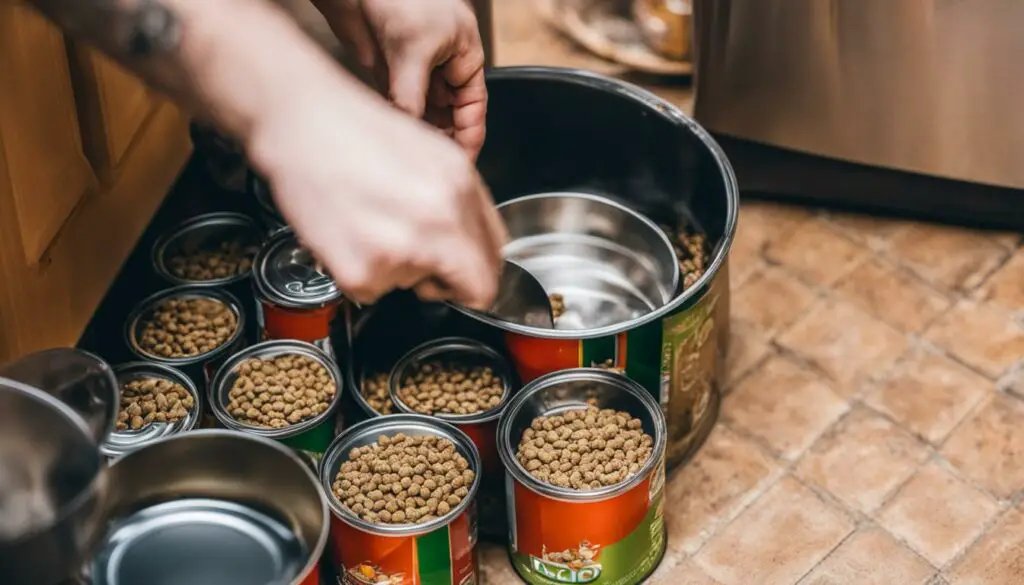
Expert Quote:
“Handling leftover wet cat food properly is essential to maintain its freshness and nutritional value. Refrigerating unused portions and warming the food to room temperature can make it more appetizing for cats. Remember to avoid reheating the same serving multiple times and serve small portions to minimize waste.”
Checking Expiration Dates and Cat Food Storage
When it comes to keeping our furry friends healthy, checking expiration dates and ensuring proper cat food storage are essential practices. By paying attention to these details, we can ensure the freshness and safety of the food we provide to our beloved cats.
By regularly examining the expiration dates on cans or pouches of wet cat food, we can be confident that the food is safe for consumption. It is crucial to discard any expired products promptly to prevent potential health risks to our cats. Additionally, checking for signs of spoilage, such as an unpleasant odor or abnormal texture, can help identify if a product has gone bad.
Proper cat food storage is equally important in maintaining the quality of the food. Unopened cans or pouches should be stored in a cool and dry place, away from direct sunlight, to extend their shelf life. Once opened, any unused portions should be promptly refrigerated in a sealed container to prevent bacterial growth and maintain freshness.
| Key Points | Recommendations |
|---|---|
| Check expiration dates | Discard expired products |
| Look for signs of spoilage | Identify if a product has gone bad |
| Store unopened cans/pouches | In a cool, dry place away from sunlight |
| Refrigerate unused portions | In a sealed container |
By following these simple guidelines, we can ensure that the cat food we provide to our furry companions is fresh, safe, and of the highest quality. It is always recommended to consult with a veterinarian for specific recommendations tailored to our cat’s needs and dietary requirements.
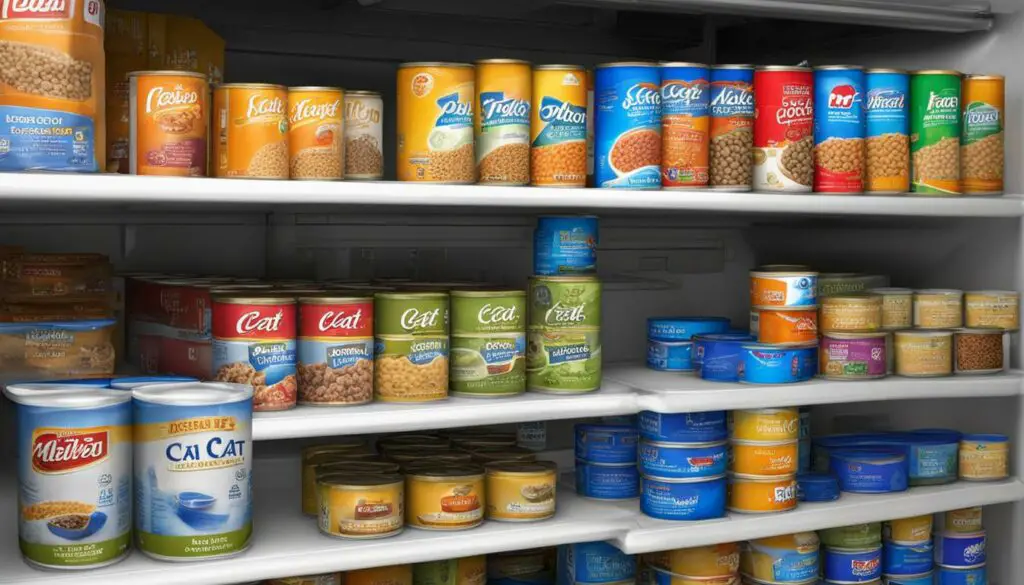
Additional Tips for Cat Food Storage
- Label opened containers with the date of opening to track freshness.
- Avoid storing wet cat food in the refrigerator door as it is subject to temperature fluctuations.
- Consider using airtight containers or portioning out food into individual servings to maintain freshness.
- Keep the feeding area clean and free from contamination to minimize the risk of bacterial growth.
“By checking expiration dates and properly storing cat food, we can ensure that our cats are getting the freshest and safest meals.”
The Role of Quality Ingredients and Packaging
When it comes to wet cat food, the quality of ingredients and packaging play a crucial role in maintaining freshness and ensuring the cat’s health. High-quality ingredients are less prone to spoilage, providing a longer shelf life for the food. They also contribute to the overall nutritional value, making it a healthy choice for our feline friends.
Not all wet cat food products are created equal, which is why it’s important to choose brands known for their commitment to using quality ingredients. Look for those that prioritize real meat sources, whole grains, and essential vitamins and minerals. These key nutrients support cats’ overall well-being and help maintain a healthy immune system.
| Benefits of Quality Ingredients in Wet Cat Food |
|---|
| 1. Enhanced flavor and palatability |
| 2. Improved digestibility and nutrient absorption |
| 3. Reduced risk of allergies and sensitivities |
| 4. Supports optimal weight management |
| 5. Promotes a shiny coat and healthy skin |
In addition to quality ingredients, the packaging of wet cat food also plays a vital role in preserving its freshness. Properly sealed cans or pouches help maintain the food’s quality by preventing exposure to air and contaminants. Look for packaging options that have airtight seals, ensuring that the food remains protected until it’s ready to be served.
When storing wet cat food, it’s essential to follow the manufacturer’s instructions regarding temperature and expiration dates. Keeping the food in a cool, dry place away from direct sunlight will further help preserve its quality. By prioritizing quality ingredients and proper packaging, we can ensure that our cats enjoy fresh, nutritious meals every time.
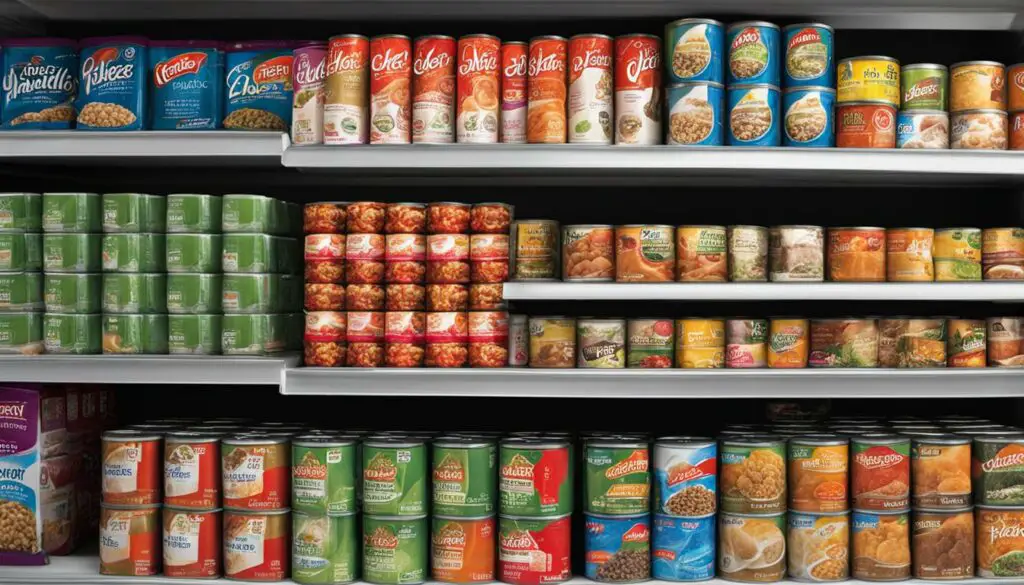
Maintaining Cat Food Freshness: Best Practices
When it comes to keeping your cat’s food fresh, there are a few key practices to follow. By properly storing, handling, and monitoring the expiration dates of wet cat food, you can ensure that your furry friend is getting the freshest and safest meals possible.
Storing and Refrigerating
One of the most important steps in maintaining cat food freshness is storing it correctly. Wet cat food should be refrigerated at a temperature between 32°F and 40°F (0°C and 4°C) to slow down bacterial growth. After opening a can or pouch, transfer any unused portion to an airtight container to prevent contamination and the absorption of unwanted odors. By following these steps, you can extend the shelf life of the food and keep it fresh for your cat.
Checking Expiration Dates
Regularly checking the expiration dates on cans or pouches of wet cat food is crucial. This ensures that the food is still safe for consumption and hasn’t gone past its freshness date. Additionally, it is important to label containers with the date they were opened to track their freshness. By doing so, you can avoid feeding your cat expired or spoiled food, which can lead to digestive issues or other health concerns.
Exploring New Options
Cats’ food preferences may change over time, so it’s important to be open to trying new options. If your cat is not eating its meals, it could be a sign that they no longer find the food appetizing. Exploring different flavors and textures can help ensure that your cat stays interested in their meals and maintains a healthy appetite. If you notice any significant changes in your cat’s eating habits, it’s always a good idea to consult with a veterinarian for further guidance.
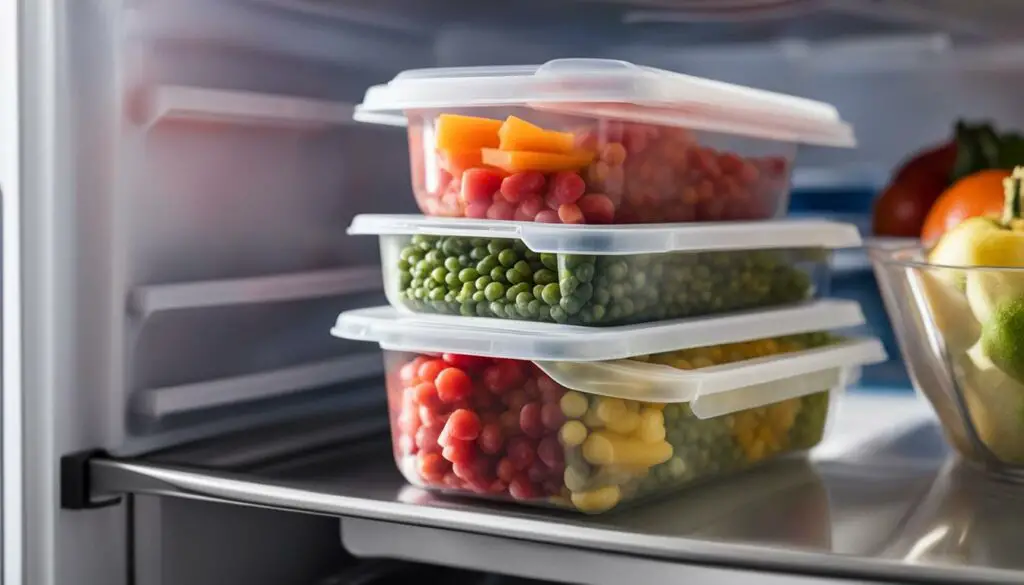
| Best Practices for Maintaining Cat Food Freshness |
|---|
| Store wet cat food in the refrigerator at 32°F-40°F (0°C-4°C) |
| Transfer unused portions to an airtight container |
| Check expiration dates regularly |
| Label containers with opening dates |
| Explore new flavors and textures |
Veterinarian Recommendations for Cat Food Storage
When it comes to storing wet cat food, veterinarians have provided valuable recommendations to ensure the freshness and nutritional value of the food. Following these guidelines is essential for maintaining the health and well-being of our feline companions.
Prioritize Proper Refrigeration
Veterinarians emphasize the importance of storing wet cat food in the refrigerator at the correct temperature range of 32°F to 40°F (0°C to 4°C). This temperature helps inhibit bacterial growth and prevent spoilage. It is crucial to refrigerate the food immediately after opening and cover it securely to maintain its freshness.
Use Airtight Containers
To prevent contamination and the absorption of unwanted odors, veterinarians recommend transferring any unused portions of wet cat food to airtight containers. This step helps maintain the food’s quality and prevents spoilage. Additionally, using separate containers for each type of cat food can prevent cross-contamination and ensure freshness.
Follow the “First In, First Out” Method
Veterinarians recommend adopting the “first in, first out” method for wet cat food storage. This means using the oldest cans or pouches first and placing the newest ones at the back. By following this practice, cat owners can ensure that the wet cat food is consumed before it reaches its expiration date, minimizing the risk of feeding spoiled food to their pets.
Consult with a Veterinarian
Each cat is unique, and their dietary needs may vary. It is advisable to consult with a veterinarian for personalized recommendations on cat food storage. Veterinarians can take into account factors such as the cat’s age, health condition, and dietary preferences when providing guidance on proper storage techniques to maintain the freshness and nutritional value of wet cat food.
By following these veterinarian recommendations for cat food storage, cat owners can ensure that their furry friends enjoy fresh, safe, and nutritious meals every time. Prioritizing proper storage techniques not only promotes the overall well-being of the cat but also helps prevent digestive issues and reduce waste.
Conclusion
In conclusion, properly storing wet cat food is vital for maintaining its freshness and ensuring the cat’s health. By following the recommended guidelines, cat owners can prevent spoilage and provide their feline companions with safe and nutritious meals.
Remember to adhere to the “first in, first out” method to use older cans or pouches first and check the expiration dates to ensure the food is still fresh. By storing the food in the refrigerator at the recommended temperature, between 32°F and 40°F (0°C and 4°C), bacterial growth can be minimized.
Furthermore, it is important to transfer any unused portions of wet cat food to an airtight container after opening to prevent contamination and unwanted odors. This will help maintain the food’s quality and prevent the absorption of any external smells.
Lastly, remember that each brand may have specific guidelines for storage and shelf life. It is essential to verify and cross-reference this information with reliable sources such as reputable cat food manufacturers or veterinary resources to ensure the best care for your furry friend.
FAQ
How long can wet cat food stay in the fridge?
Wet cat food should be consumed within three to five days after opening. The recommended storage temperature for wet cat food in the fridge is between 32°F and 40°F (0°C and 4°C).
Why is freshness important in wet cat food?
Fresh wet cat food is safer, more appetizing, and provides higher nutritional value compared to stale or expired food. It ensures that your cat is getting the best possible quality and enjoyment from their meals.
What are the best practices for storing wet cat food?
Wet cat food should be stored in a refrigerator at the recommended temperature range of 32°F to 40°F (0°C to 4°C). After opening a can or pouch, transfer any unused portion to an airtight container to prevent contamination and the absorption of unwanted odors. Follow the “first in, first out” method and check the expiration date before use.
What is the shelf life of wet cat food?
Wet cat food should be consumed within three to five days after opening. Unopened cans can be stored in the refrigerator for up to 2-5 years depending on the brand. However, opened cans should be used within 2-3 days to maintain freshness and minimize the risk of bacterial growth.
What are the signs of spoilage in wet cat food?
Signs of spoilage in wet cat food include an unpleasant odor, abnormal texture or appearance, and the presence of pests. If any of these signs are present, it is recommended to discard the food to avoid health risks for your cat.
How can I verify the shelf life information for wet cat food?
It is important to cross-reference and verify the shelf life information with reliable sources such as reputable cat food manufacturers or veterinary resources. Each brand may have different guidelines, so it’s important to follow the specific instructions provided.
How should I store wet cat food in refrigeration?
Wet cat food should be stored in the refrigerator at a temperature between 32°F and 40°F (0°C and 4°C) to slow down bacterial growth. The food should be covered and refrigerated immediately after opening, and any unused portions should be stored in a sealed container to maintain freshness.
What are some tips for handling leftover wet cat food?
If there are leftover portions of wet cat food, they should be promptly refrigerated in a sealed container. To warm up the next serving, it can be placed in a microwavable dish with plastic wrap or warmed in zippered disposable bags with running water. The goal is to warm the food to room temperature, as most cats prefer it that way.
How important is it to check expiration dates and properly store cat food?
Checking expiration dates on cans or pouches of wet cat food is crucial to ensure the food’s safety for consumption. Unopened cans or pouches should be stored in a cool and dry place, away from direct sunlight. Proper storage and adherence to expiration dates help maintain the quality and freshness of the cat food.
What role do quality ingredients and packaging play in cat food freshness?
High-quality ingredients in wet cat food are less prone to spoilage and contribute to a longer shelf life. Properly sealed cans or pouches help maintain freshness and prevent contamination. Storing the food in a cool, dry place and following the recommended storage temperature further preserves its quality.
What are some best practices for maintaining cat food freshness?
To maintain the freshness of wet cat food, it is important to store it properly, adhere to expiration dates, and follow the recommended storage temperatures. Cats’ food preferences may change, so exploring new options and consulting with a vet if there are changes in eating habits is advisable.
What recommendations do veterinarians have for cat food storage?
Veterinarians can provide expert advice on the best practices for storing and handling wet cat food to maintain its freshness and nutritional value. It is recommended to prioritize the cat’s well-being by following the recommendations from veterinary professionals and reliable sources in the field.

